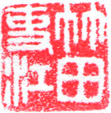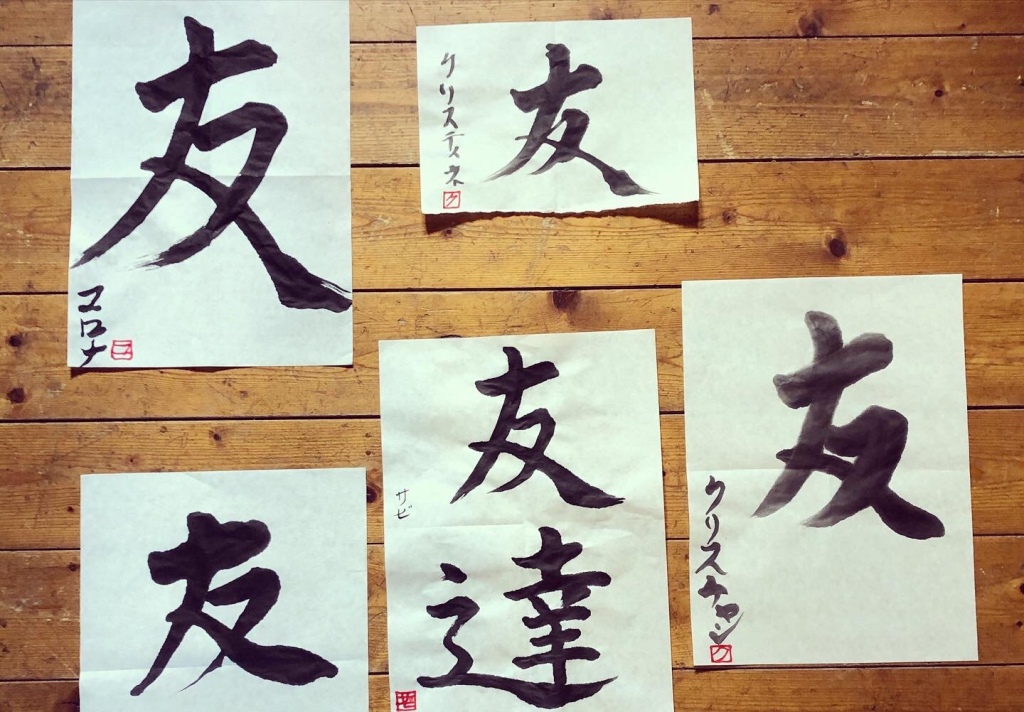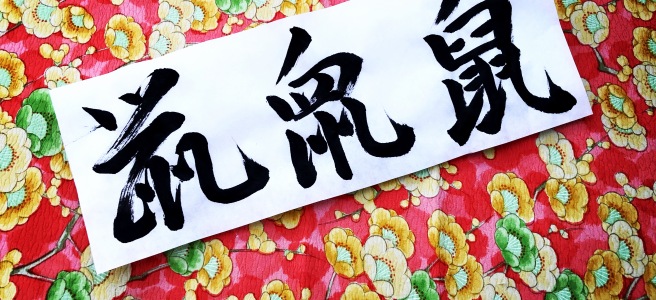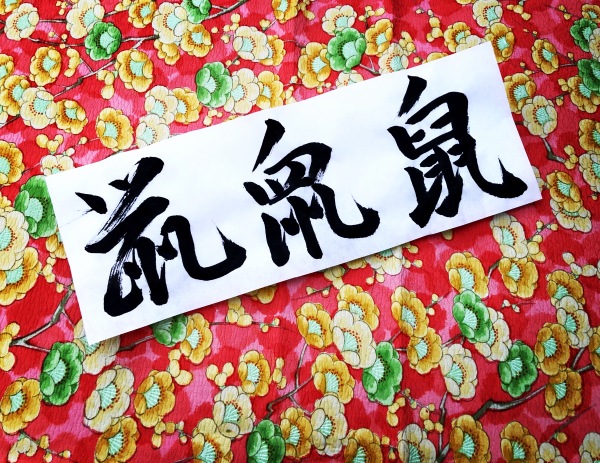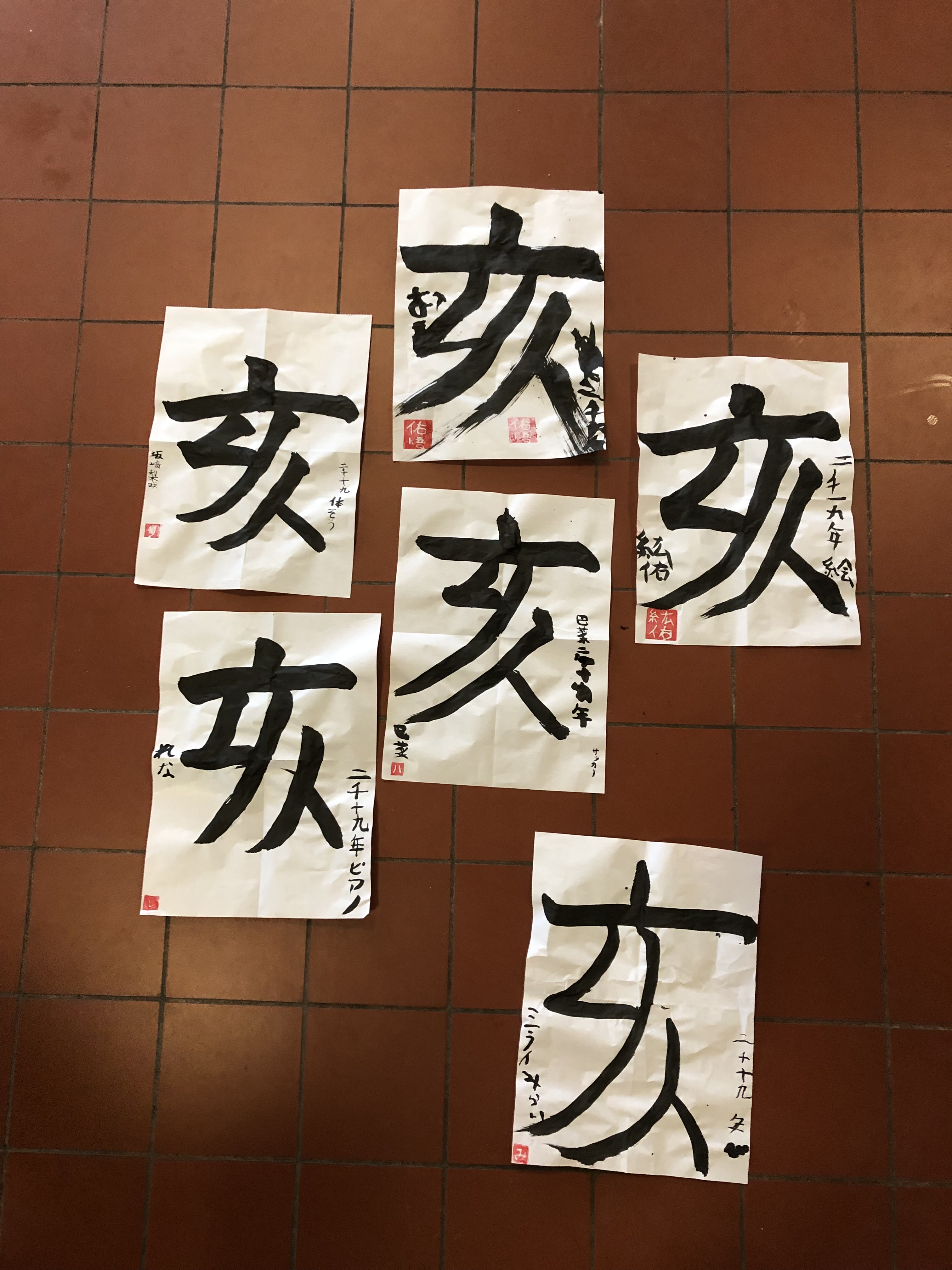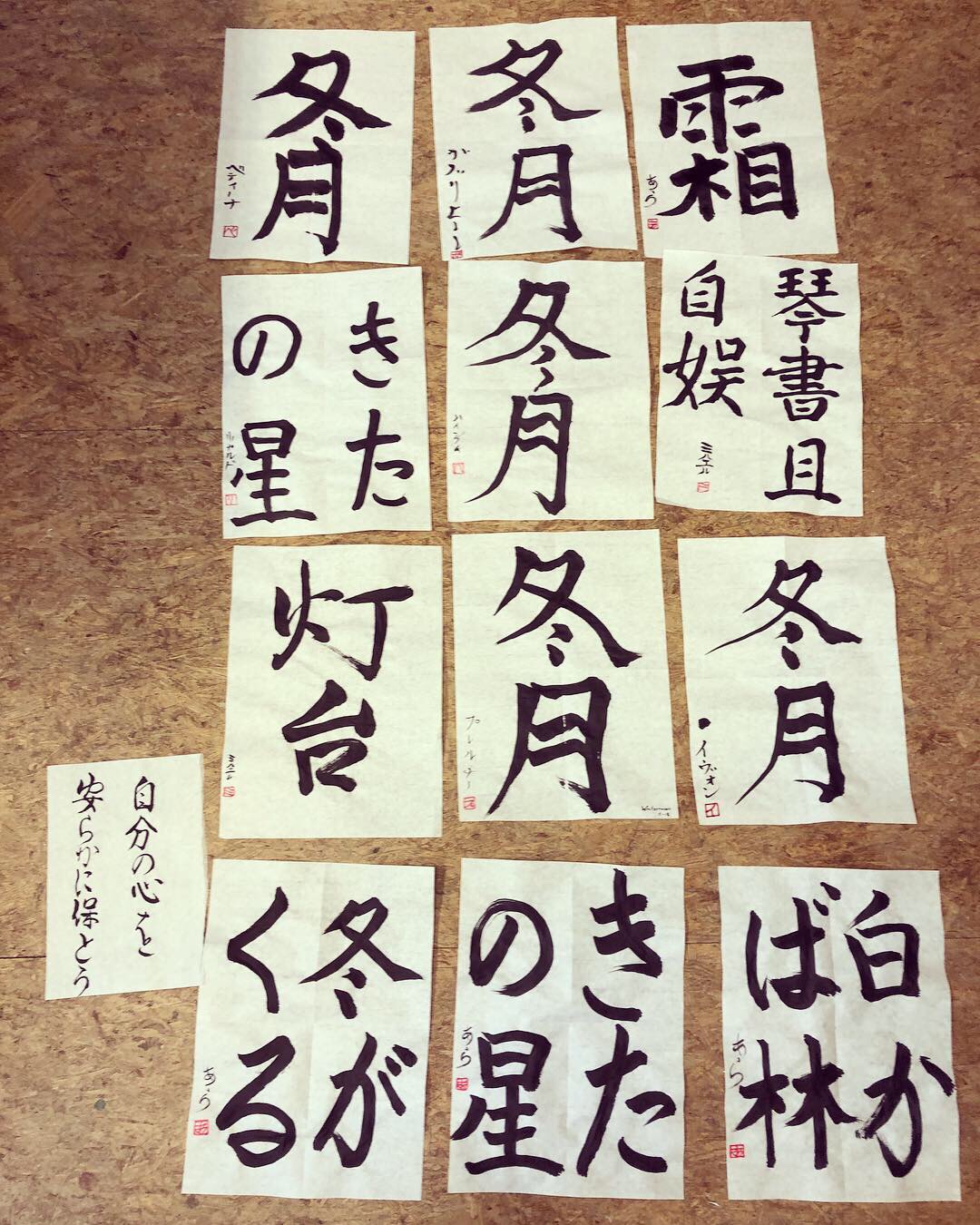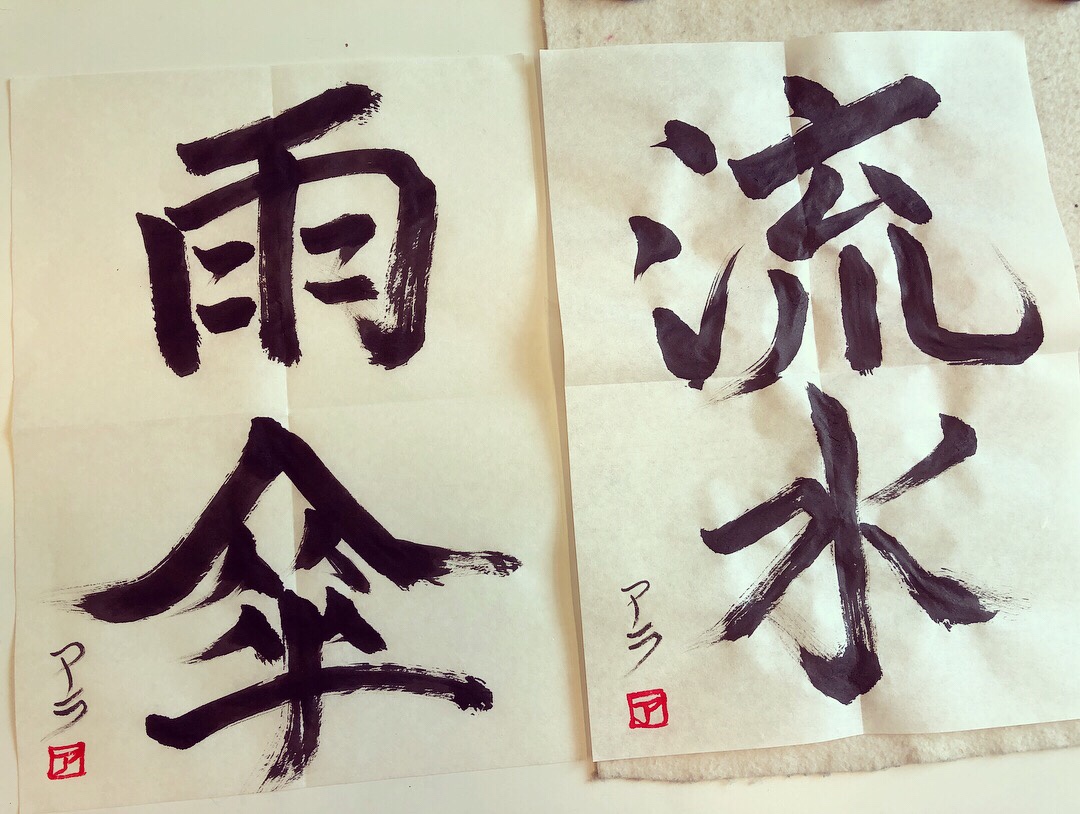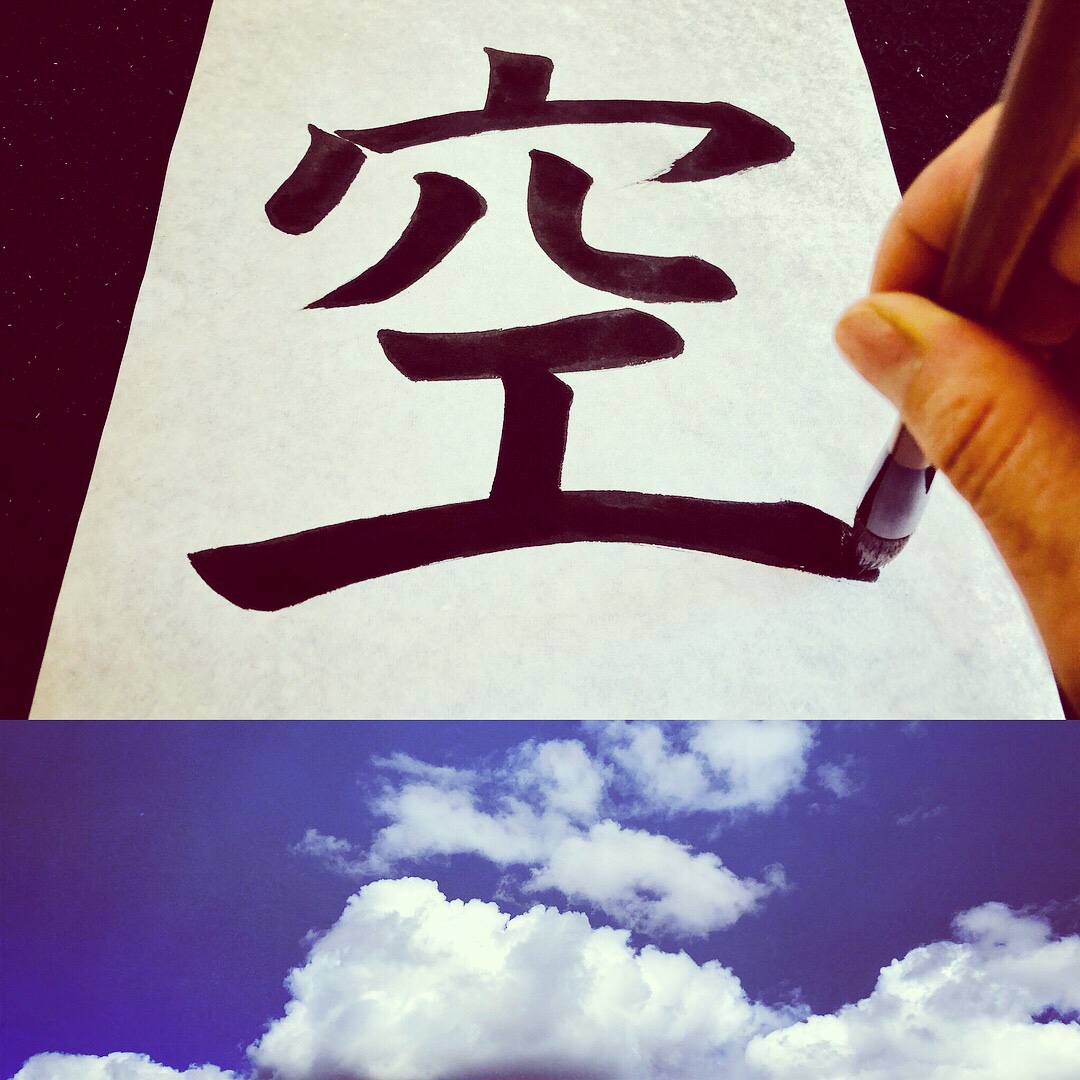Hi everyone,
I hope you are well and enjoying the spring breeze.
– Have you already seen your first cherry blossom of the year ?!
In March I’ve given a Shodo workshop with the theme word YOZAKURA 夜桜 – Cherry blossom at night.
We’ve practised YOZAKURA in two styles – Kaisho (block) and Gyosho (semi-cursive).
I was very impressed by the mindfulness process of all participants.

About Sakura, cherry blossom
Sakura cherry blossoms are without a doubt the most loved flowers in Japan.
As many know, cherry blossoms have a very short life in high spring time like in March and April.
As Sakuras are in full colour full bloom, might stay for a week or two – however a strong spring wind can instantly blow all blossoms away within a moment.
One night, Sakura is presenting its height of beauty, the next morning the pinky blossom could be all gone. One could absolutely never tell how long the breathtaking Sakura reminds in a full bloom.
Therefore the Japanese see and reflect the impermanent beauty as their own life circle.
And they see the whole transformation of Sakura as beauty – even it is withered just like their life-circle.
That’s why they gather and celebrate the arrival and the momentum beauty of the spring under the Sakura trees, called HANAMI Sakura viewing. Capturing the momentum of beauty and appreciating the present moment.
Thus Sakura also strongly presents the Ukiyo ’floating world’ as well as the Wabi-Sabi philosophy, the quintessential Japanese aesthetic which is a beauty of things imperfect, impermanent and incomplete.
In my sessions/workshops, I encourage my students to envisage the feel of these Sakura elements specially the Wabi-Sabi aspect – so impermanent and sentiment and to bring the input into the movement as they do the Seisho at the end.
(Seisho is the calligraphy with clear mind done at the final stage of Shodo practice)
Here are some Sakura inspired Haikus.
*Sakura, sakura
they fall in the dreams
of sleeping beauty
/ Yosa Buson (1716-1784)
*Scatter layer by layer,
eight-layered
cherry blossoms
/ Masaoka Shiki (1867-1902)
*Cherry blossom petals
blown by the spring breeze against
the undried wall
/ Masaoka Shiki (1867-1902)
*A lovely spring night
suddenly vanished
while we viewed cherry blossoms
/ Matsuo Basho (1644-1694)
*Photos by Jake Rajs
Moreover, I share one of my Painted Poem series.
As you can imagine I’ve painted several Sakura works in the past 20 years!
” 藍桜 SAKURA IN INDIGO“
さくら
さくら
私のさくら
桃色夜桜は
今夜のごちそう
Sakura sakura, my sakura
The pink cherry blossom is
Tonight’s beautiful treat.
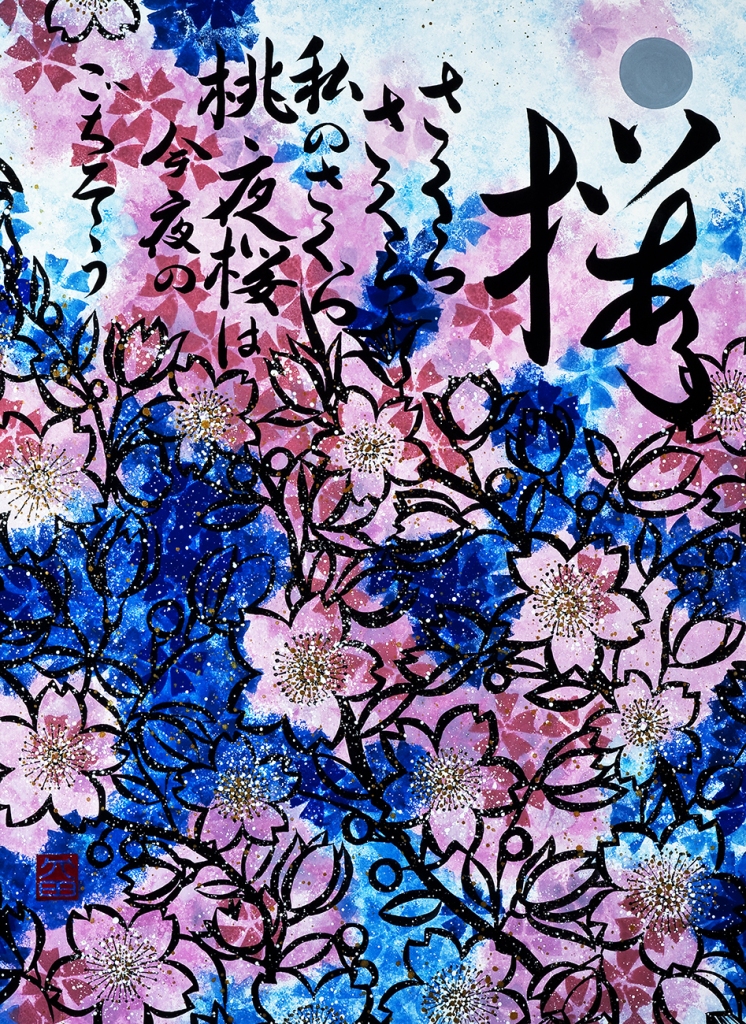
藍桜 SAKURA IN INDIGO
Sumi ink and Gouache on handmade paper, 70x100cm
2010 ©RIE TAKEDA
For now
Let’s enjoy every moment of this sunny spring….
Stay safe and inspired.
HAPPY PRACTICE!
ARIGATO – Rie
